Our First Days in La Paz
Posted by Ariane on Nov 25, 2012 in Bolivia, Countries | 6 comments
We arrived in La Paz in the middle of the night after a very tiring flight from Los Angeles.
The first thing you see from the plane—and then at anytime during the night—is the lights. La Paz, unlike many other cities, is illuminated by two different colors of lights—yellow and blue. This is so beautiful—it looks like a big Christmas tree. In addition, the different levels of the city increases the beauty of this night landscape.
* 1$=6.95 BoB “Bolivianos” (2012)
We found a room on Airbnb and stayed at a Bolivian family home (Natalia & her mother) in southern La Paz, a 20-minute drive from downtown. The family was waiting for us, and after welcoming us they showed us the room. We had a quick chat (as it was 4 am) and went to bed.
We didn’t sleep as long as we thought we would, and woke up at 11 am, so we decided to start exploring the city! As soon as we went out, the first thing we saw was the same beautiful landscape (but by day), along with cobbled streets. We were indeed in the middle of the mountains.
Thank God we didn’t experience any trouble with altitude sickness. We took a cab and went downtown to the San Francisco Church area, which is the historical part of La Paz, and wandered around all afternoon.
The streets of La Paz are up and down and cobbled in this area, which makes them very beautiful.
The Cholitas (traditionally dressed women) are everywhere, mixed in with other European/American style dressed people. Some Bolivian people are dark skinned and look Indigenous, while others look like Europeans.
As it was the rainy season in La Paz, it started raining, so we went for lunch in a Cuban restaurant in Sagarnaga Street. We continued our walk and bought some food, and later returned to our room, as we were still tired. I loved La Paz from the first day, despite the rain and how tired we were.
Back in the room, we had the chance to talk much longer with Natalia and her mother Teresa. Natalia is an amazing young woman who speaks English perfectly and spent a lot of time with us talking about her country. Many people here work in gold, silver and other metal mines, as Bolivia still houses a large quantity of those metals. We also learnt about the relationship between Bolivia and the other surrounding countries, and about Bolivian people themselves, and how they can be different from each other according to the different parts of the country. Natalia and her mother told us about the other cities (especially Oruro, where they are from) in Bolivia and where we should go. This was a big help for us, as we didn’t really have a plan for the three months we will be spending in Bolivia.
Teresa is the headmaster of a school and also works on a program that is dedicated to doing prevention in schools and educating people about floods and risks of landslides in La Paz. She doesn’t speak English, but speaks Quechua, like many people here. She took me to a conference about the city of La Paz—the architecture, the geography and the topography of the city, which are both the beauty and the danger of La Paz. Every year a lot of people die in landslides because they don’t want to leave their unstable houses (just like people who live near to volcanoes and won’t move no matter what). La Paz is also built on 500 rivers, which makes the risk bigger.
We spent the rest of our 10 days in La Paz downtown (where we had to do some administrative paperwork for our visas and get a yellow fever vaccine for me) and exploring Alto Obrajes, our neighborhood.
Alto Obrajes is a big area, but the place where we stayed was a residential neighborhood. It is very quiet, and there are a few shops and restaurants, as well as a market and a lot of dogs in the streets (which you don’t know exactly how to deal with!). We just spent three or four days walking around and resting in our apartment.
When we went to downtown, we walked a lot! It is quite easy to get around La Paz, but streets are up and down, so you have to take it easy and take your time. We usually wandered between San Francisco Church and the areas around El Prado, Ave Camacho, Plaza España, Plaza Abaroa and Plaza del Estudiante, where we found a mosque.
I really enjoyed walking the streets of the city. They are clean (the streets), not too crowded, the people are nice (even though they are not as welcoming or talkative as people in other countries) and the weather at this time of the year (November) is cool in the day (20 degree Celsius) but gets chilly in the evening (10 degree Celsius). During the night, temperatures fall down around zero. Wherever you look, you see the dramatic landscape of the mountains, with snow on the tops of some of them.
There are plenty of restaurants and cafés where you can have a rest. In those restaurants they serve almuerzo (lunch) for 15–20 Bolivianos/person, and you get a complete meal with an open buffet of salads, a soup and a second course including rice, meat and vegetable. The“almuerzo” is a very important meal in Bolivia, and some people go back home to take their lunch.
They have very tasty coffee in small shops, and you can also have snacks like empañadas and saltenas (pastries stuffed with meat, chicken or cheese) everywhere.
Of course, we didn’t visit everything in La Paz, as we will come back soon enough before our flight to Ecuador and continue our exploration of this wonderful place.


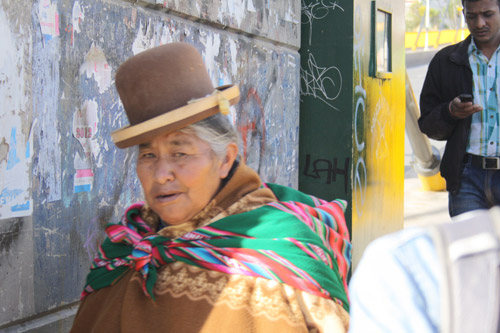
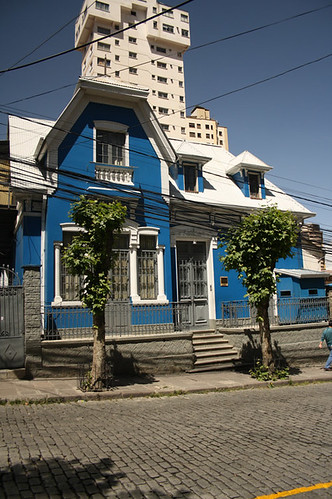
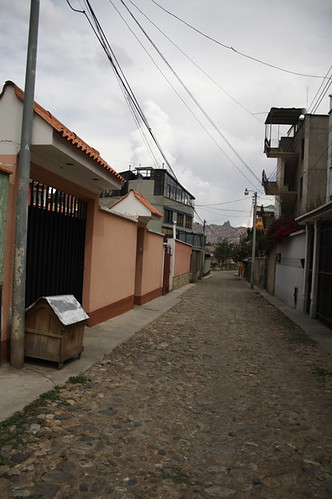
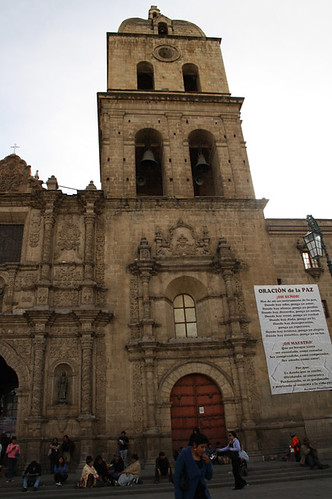

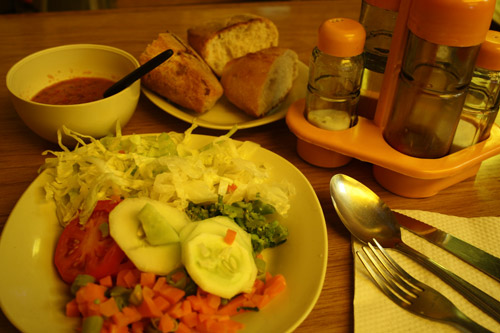

 Bassel & Ariane, a couple who quit their jobs to realize their dream "traveling around the world". This travel website is our way to share with you the amazing adventures we have had, with the goal of helping to make your own travels more enjoyable.
Bassel & Ariane, a couple who quit their jobs to realize their dream "traveling around the world". This travel website is our way to share with you the amazing adventures we have had, with the goal of helping to make your own travels more enjoyable.
I have held Bolivia as a place that I’d like to visit for quite some time now. There has always been something mystifying about it. It looks like a wonderful place to visit, and I hope to make it down their one day. Y’all have a great experience!
Thanks Andy for your comment. I hope you’ll be able to visit this beautiful country but if you do I advise you to plan at least a 6 months stay because there is so much to see here!
We spent three weeks in La Paz in February and really enjoyed it. You have to eat at Namas Te next time – a delicious vegetarian restaurant.
Carmen recently posted…Review: Namas Te, La Paz, Bolivia
Amazing city, when we were there it’s like traveling through time. We will return as we hope and will try Namas (thx for the tip) 🙂
Hello guys,
I am heading to Peru then to Bolivia, it will be my first trip to south America. I was wondering how is it safe there? I dont have that much time, maybe four days. I want to know what best places to visit ?
thank you
Four days in Bolivia is quite a challenge! Bolivia is a diverse and big country. Depending on what you like to do, for four days, we would advise you stay in La Paz and take days trips.
We’ve missed the Salar de Uyuni which is a unique place in the world. We loved Sajama (best place if you like mountains and want to see lamas, very typical and authentic) it is not too far from La Paz. For the tropical regions, you will have to fly so I don’t know if you’ll have enough time to fully enjoy. There is also the death road biking in La Paz and Titicaca lake beside La Paz too.
Concerning safety, there is a lot of poverty in Bolivia so you should be modest. People kept on warning us about thefts but in our three months trip, we didn’t have any problem, just watch your stuff. We hope this helps. Safe travel!